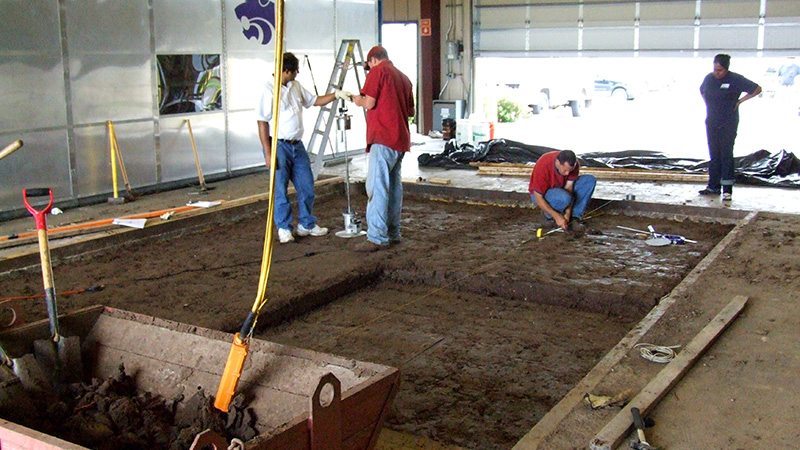
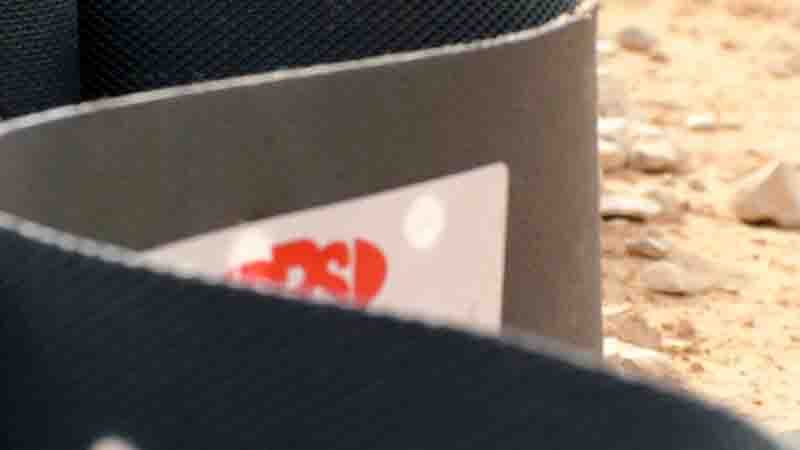
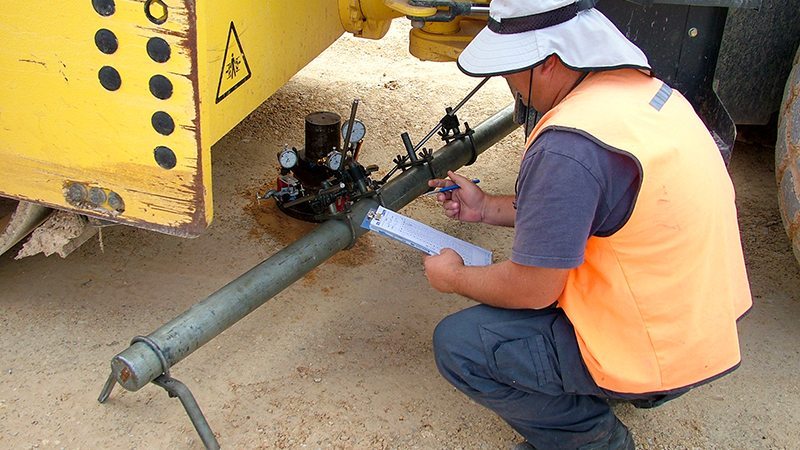
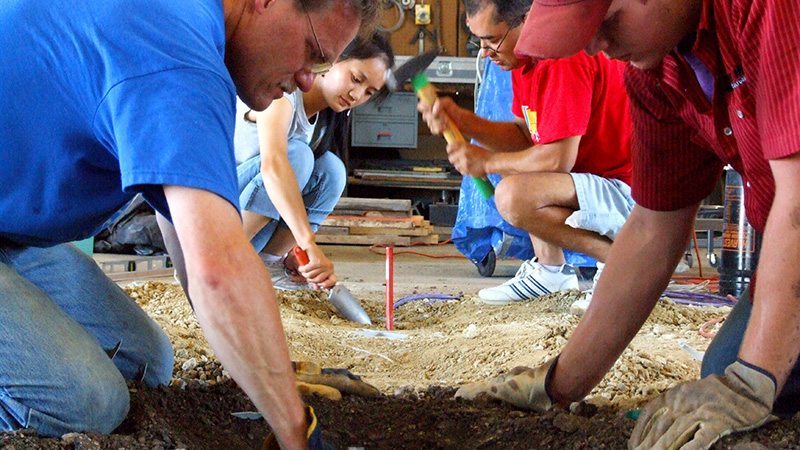
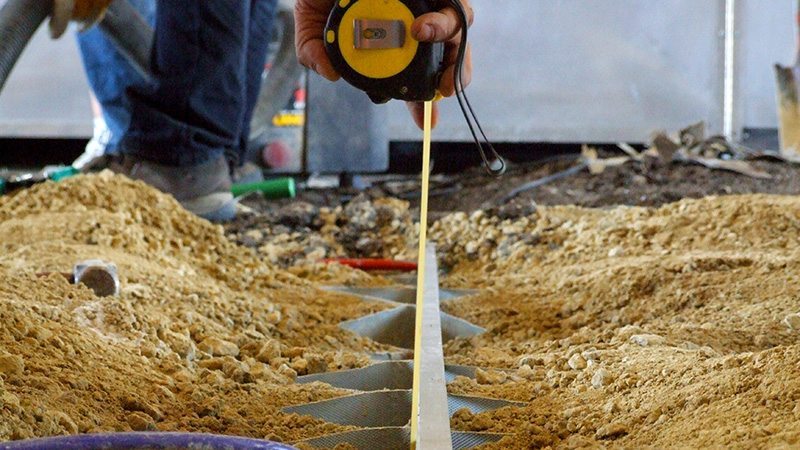
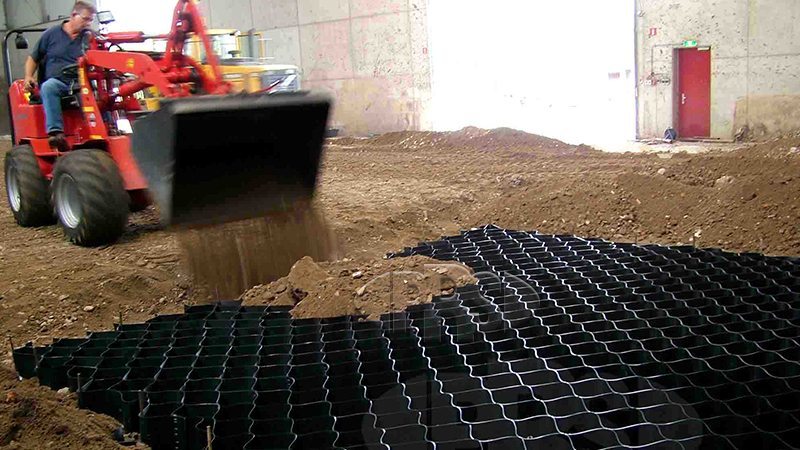
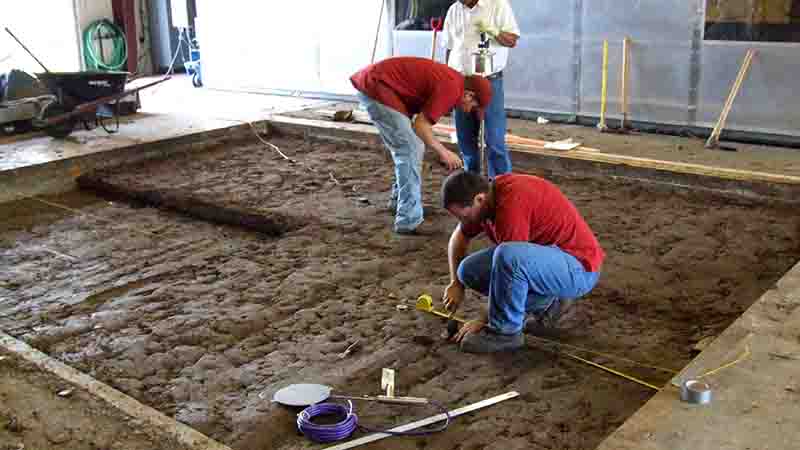







The fact that Neoloy® based PRS-Neoloy™ Tough-Cells improve the moduli of pavement layers and is suitable to reinforce the upper base layers of heavy-duty pavements, has been demonstrated in several recent projects and published research papers. In addition to defining the reinforcement mechanisms and influencing factors, recent research has also calibrated and integrated the use of NPA Tough-Cells in road design methodologies. Kief, Rajagopal, Sitharam, et al have published important papers on PRS-Neoloy pavement reinforcement lab studies, field tests and case study projects:
Rail Track Pavements on Expansive Clay Restrained by Hybrid Geosynthetic Solution, Geo-Americas 2016 Conference Proceedings, Kief (2016).
The Hybrid Geosynthetic Solution combines a biaxial geogrid on subgrade with PRS-Neoloy geocell layer in the unbound granular layer. This solution acts like an “I” shaped steel girder to effectively restrain differential heave caused by uneven swelling. The Hybrid Geosynthetic Solution is an effective composite solution for railways on expansive weak clay soils and is applicable to highways on expansive clays as well.
Hybrid Geosynthetic Solution for Rail Track on Expansive Clay, Geosynthetics 2015 Conference Proceedings, Kief (2015).
A Hybrid Geosynthetic Solution was used in a new track foundation over weak expansive clays. This unique solution combines PRS-Neoloy geocells with a geogrid layer to reinforce the sub-ballast layer. Track alignment measurements showed zero degradation, thereby demonstrating the efficacy of the hybrid solution for rail and road soil stabilization and reinforcement applications.
Structural Pavement Design with Geocells made of Novel Polymeric Alloy, Geosynthetics 2015 Conference Proceedings, Kief (2015).
PRS-Neoloy geocells from Neoloy make the implementation of geocells in the upper structural layer of heavy duty pavements feasible. This paper shows how design with PRS-Neoloy is integrated into the Mechanistic-Empirical Structural Pavement Design method. PRS-Neoloy geocells create a beam effect (a semi-rigid platform) and significantly reduce vertical stress.
High-Modulus Geocells for Sustainable Highway Infrastructure, Indian Geotechnical Journal: Special Issue on Transportation Geotechnics, Kief, et al (2014).
Research, testing, field trails, and case studies of high-modulus PRS-Neoloy geocell-reinforced bases are surveyed showing how PRS-Neoloy increases pavement performance on one hand, while achieving sustainable goals on the other,
Studies on Geosynthetic-reinforced Road Pavement Structures, Rajagopal, et al, International Journal of Geotechnical Engineering (2014).
Technological innovation such as PRS-Neoloy (NPA) geocells can improve the performance of pavements for a more sustainable highway infrastructure by increasing the strength and stiffness of pavement layers. The high Modulus Improvement Factor (MIF) of Neoloy geocells improves the modulus of marginal infill materials by an average factor of 2.75 or more as validated in laboratory and field studies and finite analysis.
Design and Construction of PRS-Neoloy Geocell Reinforced Mud Embankment, Geotextiles and Geomembranes, Sitharam and Hedge (2013).
This paper describes the design and case history of a 3m high embankment with a PRS-Neoloy geocell foundation over soft settled red mud, which combined PRS-Neoloy with a geogrid to maximize stabilization of the base. It has sustained two monsoon rainy seasons without any cracks or seepage.
Studies on Geocell Reinforced Road Pavement Structures, Geosynthetics Asia 2012, Thailand, Rajagopal, et al (2013).
Analysis of field and laboratory tests shows the multiple contributions to pavement structures of PRS-Neoloy – increased stiffness and performance, reduced layer thickness and increased service life.
Performance of Shallow Footing on Geocell Reinforced Clay Bed, Proceedings of Indian Geotechnical Conference, Hedge and Sitharam, (2012).
This paper summarizes the beneficial effect of geocell reinforcement in soft clay beds through 1-g model plate load tests and numerical simulations. PRS Neoloy geocells are used in the Investigation, known for their high strength and durability. Results show that provision of geocell increases the load carrying capacity of soft clay bed by 5 times.
PRS-Neoloy System for Structural Pavement Reinforcement of Roads & Railways, Geotec Hanoi, Vietnam, Kief and Toan (2011).
The development, testing and calibration of PRS Neoloy for PRS-Neoloy is an example of collaborative research between academia and industry to effectively develop sustainable geosynthetic solutions for the 21st century.
3D Cellular Confinement System Contribution to Structural Pavement Reinforcement, Geosynthetics India ’08, Hyderabad, Kief and Rajagopal.
The sustainable advantages of 3D PRS-Neoloy in an expanding economy like India are described, field test results from Germany (Meyer, et al) are reviewed, a reinforcement factor of 5x is back-calculated and the reinforcement mechanism described.
Modulus Improvement Factor for PRS-Neoloy-Reinforced Bases, Geosynthetics India Chennai, Kief and Rajagopal, (2011), India.
A Modulus Improvement Factor (MIF) of 2.75 was used calculated for the design of roads in India and Israel from the contribution of PRS-Neoloy in reinforcement of the base layer.
Plate Load Tests of Unpaved Road, Phaltan, India – Modulus Improvement Factor, IIT Tech. Report, India, Rajagopal (2011).
Investigators used average settlements from the plate load test under loading to test and interpret the modulus of different layers. The resulting MIF of 2.75 conforms to calculations obtained in other tests around the world.